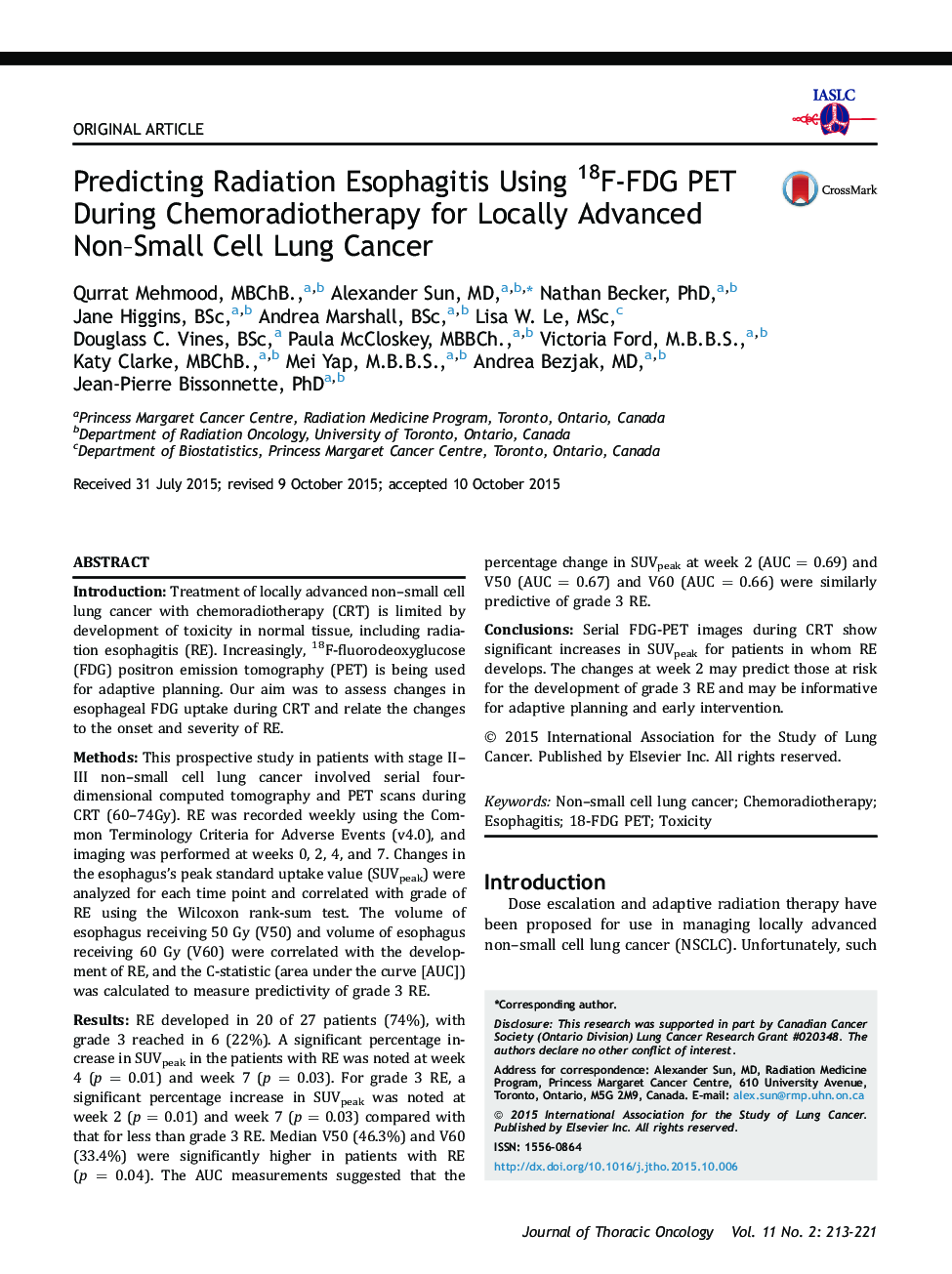| کد مقاله | کد نشریه | سال انتشار | مقاله انگلیسی | نسخه تمام متن |
|---|---|---|---|---|
| 3989409 | 1258678 | 2016 | 9 صفحه PDF | دانلود رایگان |

IntroductionTreatment of locally advanced non–small cell lung cancer with chemoradiotherapy (CRT) is limited by development of toxicity in normal tissue, including radiation esophagitis (RE). Increasingly, 18F-fluorodeoxyglucose (FDG) positron emission tomography (PET) is being used for adaptive planning. Our aim was to assess changes in esophageal FDG uptake during CRT and relate the changes to the onset and severity of RE.MethodsThis prospective study in patients with stage II–III non–small cell lung cancer involved serial four-dimensional computed tomography and PET scans during CRT (60–74Gy). RE was recorded weekly using the Common Terminology Criteria for Adverse Events (v4.0), and imaging was performed at weeks 0, 2, 4, and 7. Changes in the esophagus's peak standard uptake value (SUVpeak) were analyzed for each time point and correlated with grade of RE using the Wilcoxon rank-sum test. The volume of esophagus receiving 50 Gy (V50) and volume of esophagus receiving 60 Gy (V60) were correlated with the development of RE, and the C-statistic (area under the curve [AUC]) was calculated to measure predictivity of grade 3 RE.ResultsRE developed in 20 of 27 patients (74%), with grade 3 reached in 6 (22%). A significant percentage increase in SUVpeak in the patients with RE was noted at week 4 (p = 0.01) and week 7 (p = 0.03). For grade 3 RE, a significant percentage increase in SUVpeak was noted at week 2 (p = 0.01) and week 7 (p = 0.03) compared with that for less than grade 3 RE. Median V50 (46.3%) and V60 (33.4%) were significantly higher in patients with RE (p = 0.04). The AUC measurements suggested that the percentage change in SUVpeak at week 2 (AUC = 0.69) and V50 (AUC = 0.67) and V60 (AUC = 0.66) were similarly predictive of grade 3 RE.ConclusionsSerial FDG-PET images during CRT show significant increases in SUVpeak for patients in whom RE develops. The changes at week 2 may predict those at risk for the development of grade 3 RE and may be informative for adaptive planning and early intervention.
Journal: Journal of Thoracic Oncology - Volume 11, Issue 2, February 2016, Pages 213–221